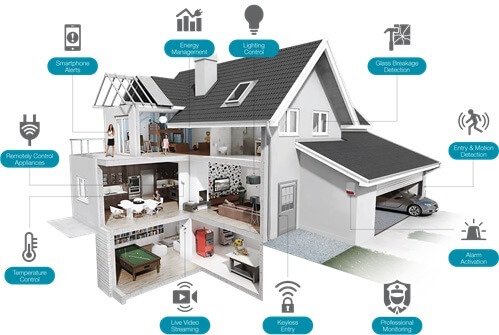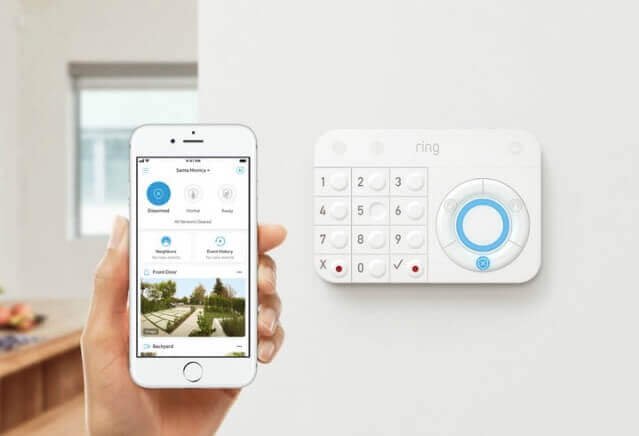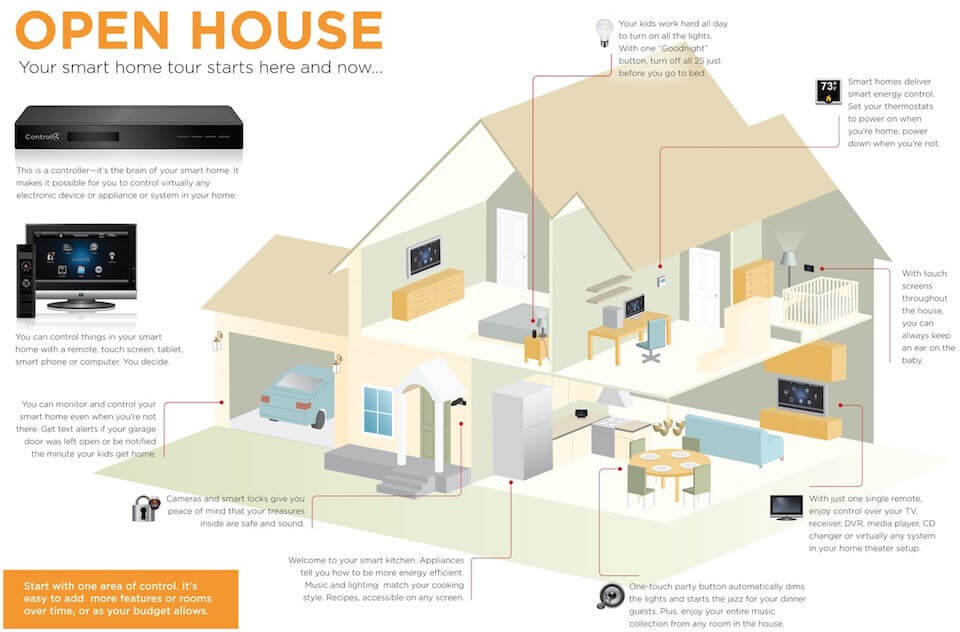Have you ever tried to get a piece of technology to work with no success?
Imagine if each time you are dealing with a malfunctioning device, you could simply ask it what was wrong or have it troubleshoot the issue for you.
Sound amazing?
If so, you’ll be happy to know that the above situation is starting to become a reality. With the Internet of Things (IoT), your devices and appliances can be online and communicate with each other, as well as solve their own technological issues.
If you currently have a smartphone tablet or computer, you already benefit from the IoT. You might not think about it, but you’re probably living in somewhat of a smart home already.
What’s next, though?
Well, you could get a smart fridge that reminds you to cook your steaks before they expire. You could get a smart plug for your kitchen that turns on at 7 A.M. so you save power overnight until you’re ready to cook breakfast.
You can currently use many smart home devices, and as time passes, only more are released. Soon, nearly everything in your house will be able to communicate to make your life easier.
That being said, with a high level of connectivity comes higher security risks.
When your home is connected, thieves will want to hack into your system to take advantage of your personal information. So, while your devices are getting smarter, it’s your job to make sure they’re safe, too, which is why some may need a membership with a technical support company.
The right computer assistance company can help you monitor issues, like why your devices might be running slowly or not communicating correctly.
By evaluating these changes, the support company can let you know when your devices are malfunctioning due to an outsider attack.
A Day In the Life
If you’re not sold on smart homes yet, you’re not alone. The thought of living in a connected house takes some getting used to before it feels comfortable and beneficial.
One of the best ways to imagine how home technology can benefit you is to picture what your day would look like in a smart home. Before you wake up, your blinds start to rise slowly, letting natural sunlight into your room. As the sunlight gently wakes you up, a playlist with songs you love starts to play quietly in your room.
While you stand and walk to your bathroom, the speakers above your shower turn on and a bath starts to run, without you touching a single thing. After you take a bath, you go to your kitchen to find your coffee is freshly brewed and your smart fridge is providing you with a smoothie recipe based on the ingredients in your fridge.
As you head out on a morning walk, your home’s thermostat turns down to save energy. A smart vacuum then cleans debris your floors before a smart mop comes around to polish your rooms with hardwood.
When you’re back in route home, your phone communicates to your thermostat that you’re on the way, so the house warms again. The second you pull up, your garage door automatically opens, and as you lock your car, the door to your home unlocks electronically.
The ingredients you need for dinner are all listed on your smart TV’s screen. During the time you’re pulling out your ingredients, an electric kettle turns on and starts brewing your favorite cup of tea.
After dinner, the lights start to dim, helping you wind down.
When you get back to your room, you find that the blinds have been lowered and there’s light classical music playing overhead. The instant your head hits the pillow, your lights slowly fade and a smart radio displays the time on your ceiling, also letting you know how many hours of sleep you need for a restful night.
Aging In Place
The day described above sounds pretty amazing to most, but how do you make it all happen?
With all the technology involved, it seems that the only people fit for smart homes are digital natives who have a background in tech. Luckily, this is not the case.
In fact, one of the main advantages to smart homes is that they keep aging populations independent for longer. The expected population of people age 65 and older in the United States in 2060 is 98.2 million. This growing group needs an innovative solution so they can continue to live the lives they desire.
For many, a smart home is the answer to maintaining a high quality of life.
With smart technology, a home can learn and monitor a senior’s daily movements.
If a senior ever falls, the home can automatically alert the proper authorities. In the event an adult doesn’t return back to his or her home within a specific time frame and is inactive on other devices, the alert can have a loved one check in with the senior.
Organizing a Smart Home
Starting to organize anything can be overwhelming, especially when it regards something as complicated as a smart home. Fortunately, there are wonderful professors and industry leaders, like Edgar Henry Schein, that provide insight and expertise.
According to Schein, there are often four components of organization: a common purpose, a coordinated effort, a division of labor and a hierarchy of authority.
Common Purpose
A smart home without a clear purpose or mission can become overwhelming and inefficient. With one goal in place, all smart objects can relate to the goal and help everything progress in a specific direction.
If you’re a senior who’s trying to age in place, you can make the mutual task of your smart home to make your life easier. Each device you purchase can contribute to this purpose to ensure you have the best result.
Coordinated Effort
Even if you have a common purpose, you can’t achieve it without a coordinated effort.
Every device you have must be able to communicate with your other devices in a way that amplifies all of their specific advantages and functions.
Division of Labor
One way to ensure your devices are working well together to reach the same goal is to make sure they’re all taking on the task they’re best at carrying out. Essentially, you want to make sure that the systems you have operate in a way that’s conducive to your needs.
A simple way to think about this is with a smart fridge.
Many smart fridges can boil water as well as help you create a grocery list. Theoretically, you could use your fridge to carry out both of these tasks at once, but why would you if you also have a smart coffee maker that can boil water in less time?
Using division of labor, you can make sure that every device you have is operating in a way that allows it to achieve its designed purpose or carry out its most efficient skill.
Hierarchy of Authority
Every system needs a chain of command.
Without a control mechanism, how are you to make sure things do exactly what they need at the right times? With smart homes, the hierarchy of authority should nearly always be headed by a smart hub.
A smart home hub is a device that connects all devices on a home’s network to help control them and make sure they’re working properly together. Smart hubs are key components to smart home security as well, since they monitor every piece of technology on a network.
If you think about a smart hub as a universal remote, it’s easy to see how beneficial and crucial they are to proper operation. A universal remote can automate, schedule and control every smart device in your home.
In the event of a threat, it can also power off or shut down all of your IoT-enabled devices, from door locks to thermostats.
Making Safety a Priority
A key part of an organized smart home is a sound security plan.
First, you should be updating your smart home devices automatically or at least every month. For computers, tablets and more, updates fix security flaws and vulnerabilities to better protect you from thieves and hackers.
It’s also smart to protect your system with strong passwords that are hard to crack. With random passcodes, you can make sure you can log onto your system while keeping others off.
Some technology experts recommend that you establish a separate WiFi network for your smart devices so they’re on a different line from your other internet activities.
Hypothetically, if your laptop and thermostat are on the same network, someone can hack into your thermostat and access your bank account information that you pull up on your laptop. With separate networks, your vulnerability decreases, as there’s only so much information one can gain if he or she hacks into your system.
Creating Your Smart Home
With seemingly endless smart tech comes seemingly endless possibilities. There’s so much to gain from creating your own smart home, as long as you organize and secure your devices correctly.
As you begin to create your first smart home, work with a technical support company that can help you bring together all of your devices and take advantage of everything they have to offer.




